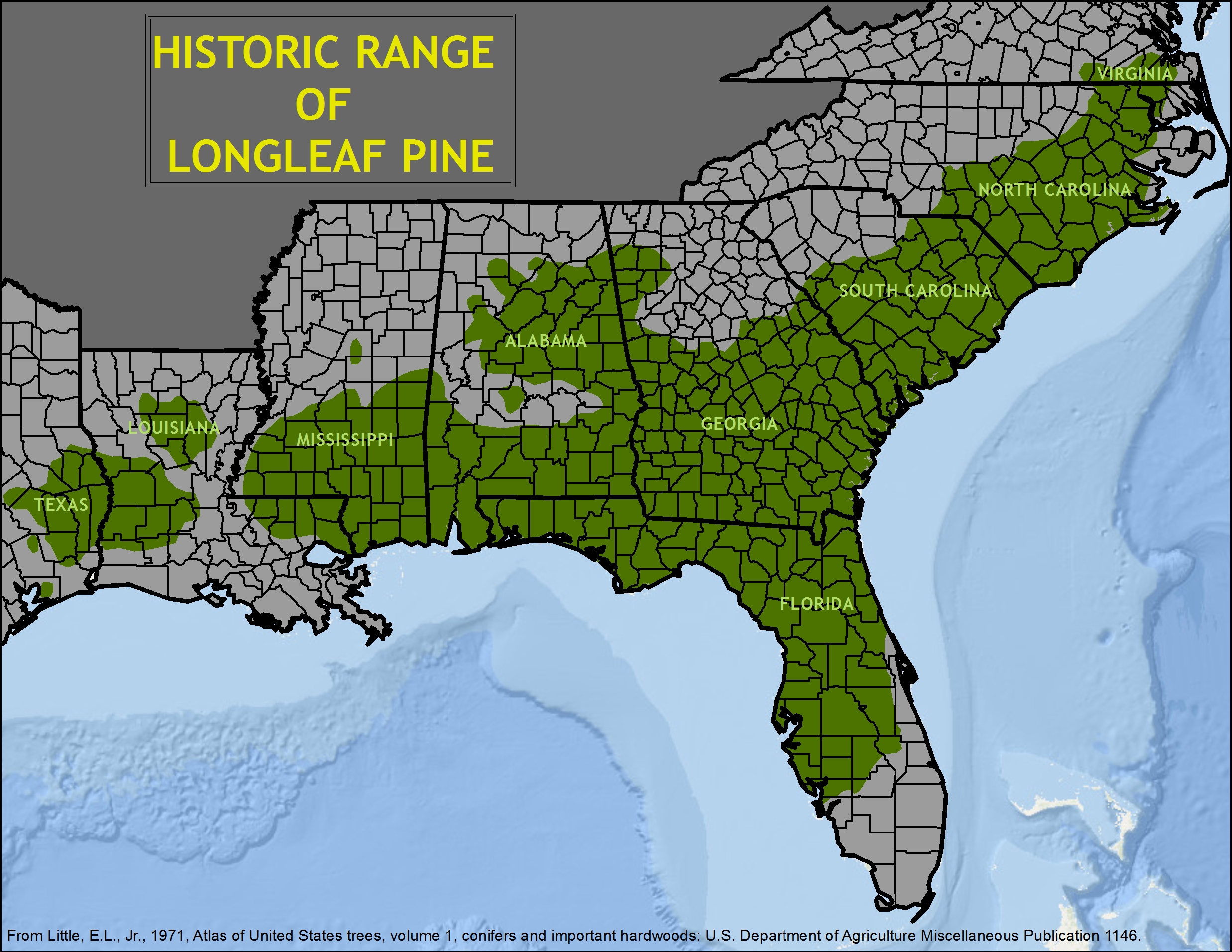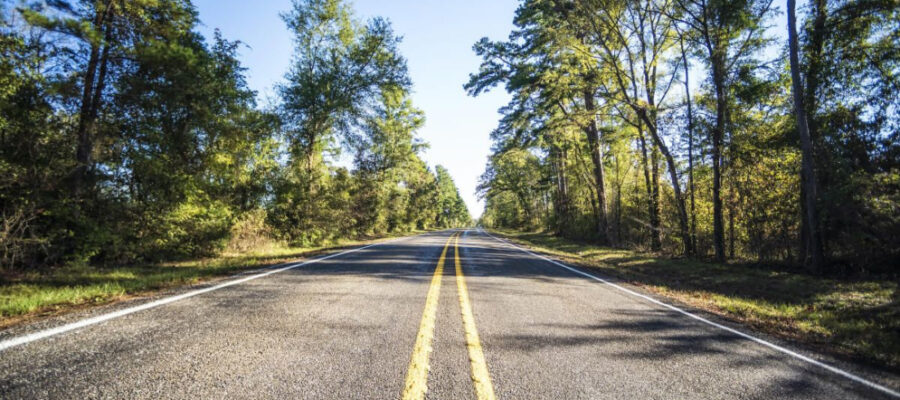The Pine Belt, or “Piney Woods” and often synonymous with the “Deep South,” is a long stretch of pine tree forested land ranging from Southeastern Virginia to East Texas, being relegated to the Lowland South. Instead of a contiguous stream of pine forests, it is a massive region spattered with broken sub regions of said pine forests. The focus here will be on the piney sub region of Southeast Mississippi, my neck of the woods.

An unforgiving ecosystem, the summers are hot, the sun oppressive, the weather unpredictable, and the air sticky with sub-tropical humidity. The topsoil, thin and lacking in nutrients, provides little aid in growing crops. Under the thin topsoil sits a thick layer of hard red clay; this form of soil is called ultisol. This, along with the beating sun, allows only for the hardiest of vegetation to grow and prosper. Even until the 1980s, the only corn locals could make grow within Southeast Mississippi was tough, flavorless field corn. The lack of nutrient rich soil also means trees and animals must be hardy.
The history of the area, unrecorded and lost or simply forgotten, is a long and violent one. Settled by Celtic people seeking to escape the influence of the Anglo Planters, criminals looking to hide from the Law, runaway slaves, poor “white trash,” and all assortment of social outcasts, the region’s tough nature made a perfect locale for such individuals, and the virgin forests isolated them from authorities. Traveling down the Leaf River and its tributaries, these rugged folks never traveled far from the rivers at that time. The small population allowed for infamous outlaws, such as James Copeland and Newt Knight, to run roughshod abundantly. Race mixing, adultery, and inbreeding were common. Thankfully, these practices were tempered by the development of the 20th Century, but the stereotype of inbreeding did last and was an unfortunate circumstance that can still be seen today. Violence and one’s ability to defend himself was the law of the land. These people and this land would form the brunt of Ku Klux Klan activity in Mississippi during the 1960s. Interestingly enough, the Klan violence was not so much about being pro-Confederacy as it was about being anti-Negro, and antigovernment encroachment. Should you decide to visit this region and begin asking older members of the populace about its history and people, as well as, simply interact with the people here, it would not take you long to figure out this is one backstabbing, cutthroat, greedy lot more interested in personal gain and screwing over their neighbors than being a decent member of society.
The population was so small or dispersed pre-War that no antebellum cities or towns formed in the area. In fact, the area would be so isolated that everything east of Columbia, south of Meridian, and north of the Gulf Coast cities existed as a frontier land populated by lawless vagabonds and isolated communities. Incorporation of towns and cities did not even begin to take place until the 1880’s and 1890’s when the railroads were finally being built in the area. Even then, vast swathes of Southeast MS’s counties would remain isolated and belligerent well into the 1980s, a century after incorporation began. Even today, some parts still revel in iniquity and degeneracy.
I described the locale in an admittedly overzealous, harsh fashion to say this: the ecosystem and culture of this particular area of Mississippi has been largely decimated and its history destroyed. Despite the aforementioned negative characteristics, the region has a rugged beauty about it. The people, reprehensible in a way, exude a vivaciousness not seen within the urban and suburban hellscapes.
Though the culture withers due to the negative aspect of modern society, what appears to suffer the most of the region is its natural ecology. Suffering alongside the declining ecosystem of the rest of the state and overseen by Republican grifters, Mississippi faces environmental issues ranging from the debilitating pollution of the Mississippi River Delta due to Big Ag’s use of fertilizers to the unremitting suburban sprawl consuming everything in its path. However, I digress.
Various flora and fauna in the Pine Belt region have been brought to an endangered status or wholly driven to extinction, and the environment is in decline. This brings to mind the Southern Red Wolf and the Mississippi Fox Squirrel and the pollution of the Mississippi River, but this piece will refrain from such tangents. Here, I would like to focus on trees. Though requiring the hardiest of vegetation, the woodlands within this region were once populated with a much more diverse and healthy population of various hardwoods and pines. Despite the name, the pine has never been the sole tree seen within the ecosystem and did not so intensely dominate the landscape as it does now.
Housing a multitude of pine trees, examples being slash, shortleaf, and loblolly, the red clay soil and mixed pine-hardwood woodlands give the impression of healthy floral biodiversity. Unfortunately, this is simply not the case. The timber industry runs rampant with reckless abandon in its eradication of the local forests. The tree to suffer the most as a result has been the historic longleaf pine.

Beginning during the Reconstruction Period, timber companies from the North quickly took advantage of Dixie’s desolation from the War and the desire for work and money among the populace. Having wiped out much of their own ecosystem, the Carpetbaggers craved the monetary gains to be found in the vast, untouched, and ancient forests of the Lowland South, particularly among the native yellow pines. The Carpetbaggers sought to utilize the dense core of the longleaf pine wood, “heart pine” as it is often called, and all of Dixie’s remaining virgin forests had been wholly eradicated by the 1930s, rendering the longleaf pine nearly extinct. Some even believed the tree to have already been wiped out.

Of course, this is not entirely the Yankees’ fault. Southerners willingly destroyed their own ecosystem for work, but it did them little good. The timber industry continued to grow following Reconstruction, being one of the few factors of that period to remain after the Republicans’ retreat, and the railroad did with it. Many of the aforementioned towns which sprang up between 1880 and 1910 because of railroad expansion died out years ago once opportunities, particularly those provided by the railroads and their relationship with timber, dried up. These remaining towns and cities never fully industrialized, relying heavily upon hospitals, services, and universities to keep the populations high and growing and businesses successful. Should schools shut down long term here for any reason, such as a truly deadly and debilitating disease, our cities and their businesses would quickly dry up.
Now, our woodlands are experiencing continued and regular thinning of their biodiversity, with little regulation or self-control of timber companies. The lush hardwood and pine forests have withered away, and even power line companies will go out of their way to cut back trees further than necessary, then turn around and sell the wood. Unremitting growth of the suburbs only magnifies the issue. Much of our rural areas are covered in an assortment of slash, shortleaf, loblolly, and specially bred hybrid trees that timber companies plant because they grow more quickly than other trees. These breeds ultimately take over an environment and smother out hardwood breeds, as well as, offer little, if anything, benefit to the area. Ecosystem and habitat decline and reckless hunting has severely effected local wildlife and deer populations. Furthermore, the Mississippi GOP is more than happy to allow this, and farmers are not so generous to the land as is often the stereotype. The cherries on top are the blatant disregard locals have for these rural environments and the poor image of any form of environmentalism has been due to the Left’s takeover, and mismanagement, of any such preservations attempts. Psychotic Leftists have taken stewardship of the land and turned it into a tree-hugging joke.
This land is not as beautiful as the land our people once proudly called home.

O I’m a good old rebel, now that’s just what I am. For this “fair land of freedom” I do not care at all. I’m glad I fit against it, I only wish we’d won, And I don’t want no pardon for anything I done.






Interesting read, thanks for your contribution.